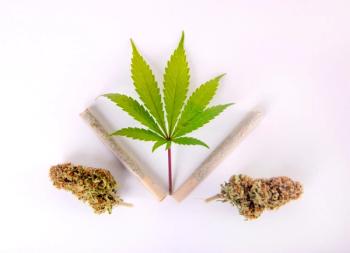
Cannabis Science and Technology
- March 2021
- Volume 4
- Issue 2
Quality Control Checkpoints in Cannabis Processing

A review of the general state standard quality control checkpoints and how companies can go above and beyond by applying federal requirements to their businesses.
The cannabis industry within the US has yet to experience federal quality control regulations. The best thing we can do as industry members is to apply best practices from state regulatory agencies in combination with federal best practices from similar industries. In this article, we review general state standard quality control checkpoints and how companies can go above and beyond by applying federal requirements to their businesses. This is a great way to prepare for future legalization as well as a marketing asset.
The United States Federal Government has rules, regulations, and best practices established for all industries. However, the cannabis industry is considered federally illegal. The Cole Memorandum was rescinded in 2018, leaving only the Farm Bill to offer the cannabis industry clarity on the federal government’s stance on cannabis and how to ensure consumer safety. The US Food and Drug Administration (FDA) has deferred the responsibility to states for creating regulations and guidelines that ensure cannabis products are subject to sufficient quality control and quality assurance measures. What are those measures and are they sufficient?
Current Good Manufacturing Practice
The FDA has established systems that assure proper design, monitoring, and control of manufacturing processes and facilities based on the type of consumer product (for example, drugs, supplements, and food)
The FDA defines current good manufacturing practices (CGMPs) for a drug product and production
of food as:
■ Minimum requirements for the methods, facilities, and controls used in manufacturing, processing, and packing of a drug product.
■ Appropriate personal hygienic practices, design, and construction of a food plant and maintenance of plant grounds, plant equipment, sanitary operations, facility sanitation, and production and process controls during the production of food.
Most state regulations simply affirm that companies are required to produce, process, and package cannabis products using “good manufacturing practices.” Regulators are inspecting and auditing for security and traceability compliance and not as focused on methods or sanitation. This leaves companies up to their own discretion as to what constitutes good practices. For more clearly defined best practices, companies can look to the federal CGMPs and the Code of Federal Regulations (CFR) provided by the FDA. A few important guidelines from the drug and food CGMPs are listed below.
Personnel
■ Hygienic practices to prevent microbial contamination from sick or infected personnel
■ Personnel policies to mitigate risk of physical, biological, or chemical contamination
■ Supervisor and quality control accountability
■ Record keeping requirements
Physical Plant and Grounds
■ Sanitation requirements of company grounds and sanitation schedule
■ Sanitation and maintenance equipment
■ Sanitary waste handling and disposal
■ Physical plant sanitation requirements and safe handling of cleaning chemicals
■ Pest control requirements
■ Designated water supply for production versus hand washing
■ Record keeping requirements
Equipment
■ Regular sanitation and maintenance practices and schedules of equipment and utensils
■ Regular calibration procedures and schedules of equipment and utensils
■ Explicit requirements for specifications of equipment and utensils to mitigate safety risks of equipment and utensil use
■ Established guidelines and procedures to ensure equipment and utensils are employed for their
intended use
■ Record keeping requirements
Processes and Procedures
■ Documented standard operating procedures
■ Documented training program for processes and procedures
■ Documented record keeping practices
■ Documented specifications for equipment, processes, and final products
The above list is only a small sample of CGMP requirements and yet it is clear that CGMPs are expansive in reach. Cannabis across the US is produced as both a medicinal and recreational product. So, looking to the most applicable CGMP guidelines is integral for operators in either category. CGMPs cover a lot of ground but, because the nature of each business can be different, they are written for operators to be able to customize them for their operations. As cannabis operators, CGMPs and the CFR are both robust sets of policies and procedural guidelines for the cannabis industry to immediately create practices in production voluntarily as opposed to when federal regulations are imposed. This is not only for best practices now, but also to be prepared for the future.
Current established quality control checkpoints for operations after the plant has been harvested are discussed below.
Biomass
■ Visual inspection of biomass to check for quality
■ Analytical testing of dried and cured biomass for required metrics and ensure safety
■ Regular audits of processes and procedures to ensure best practices are being used and followed
Extraction and Refinement
■ Visual and physical inspection of input material to mitigate risk of contamination
■ Analytical testing of input material for confirmation of product quality and calculate final output efficiency
■ Visual and physical inspection for quality of extract at crude and refined stages
■ Analytical testing of intermediate and final extract product for quality, calculating efficiency, and final product formulation
■ Regular audits of processes and procedures to ensure best practices are being used and followed
Final Product and Formulation
■ Visual inspection of all ingredients
■ Visual inspection of finished product
■ Analytical testing of finished product for required and voluntary testing measures
■ Quality control sampling of product to ensure target quality and effects of product are met
■ Regular audits of processes and procedures to ensure best practices are being used and followed
Company Foundation
■ Embedding quality control in company culture
■ Creating and maintaining policy, procedure, and training program documents
■ Regularly self-auditing company grounds, operations, and documentation
■ Establishing routine quality control audits completed by a third party auditor
Quality Control Testing
Most states require final products to be tested for the following measures:
■ Flower:
- Potency of THC and CBD
- Microbial
- Mycotoxin
- Foreign matter
- Moisture content
■ Concentrates and infused products:
- Potency of THC and CBD
- Mycotoxin
- Foreign matter
- Residual solvent
Some states, such as California, require expansive cannabinoid and terpene analysis along with pesticide and heavy metal testing. As more is understood about the cannabis chemicals that should be tested, analytical testing requirements will be added, subtracted, and refined. Unfortunately, there are waves of distrust between cannabis companies and the analytical testing laboratories due to a lack of standardized testing methods among the analytical laboratories. The result is inconsistency between tests, laboratories, and batches which naturally leads to distrust.
Weaknesses in Quality Assurance and Quality Control
Several problems have led to weaknesses in quality assurance and quality control, including:
■ Poor enforcement of laboratory standards—There have been reports of testing laboratories being suspended for falsifying test results generating results that report high cannabinoid content or cover pesticide use.
■ Insufficient expertise at the regulatory level for robust audits at the production, processing, and laboratory levels.
■ Self-sampling—Relying on companies to self-sample and adhere to the “required” sampling methods is a major weakness in most current testing practices. In states where a third party, such as a laboratory, is the responsible party for collecting samples there is far more credibility with respect to the accuracy of the final test results.
■ Auditing final product testing—Governing bodies should be spot checking testing accuracy of final products on retail shelves to ensure that manufacturers and laboratories are using best practices and supplying accurate results. Only a few states regularly test products directly from retail shelves.
As operators continue to innovate and new products reach consumers, manufacturers should be hyper-vigilant of ingredients and methods of administration. The cannabis industry has now seen multiple waves of realization around pesticides, residual solvents, mold and mycotoxins, and inhaled additive risks and consequences. There are little to no long-term scientific references for cannabis products and their effects on the human body, so it is vital for consumers and the longevity of the market to produce products with minimal risk and in a manner that mitigates risk for all parties. The general public is increasingly aware of these product risks and are becoming more skeptical of brands and products. Going above and beyond with quality control and quality assurance measures becomes a valuable asset as a brand in the face of increasingly competitive marketplaces.
The cannabis industry is still relatively young with many milestones ahead. In no way is this article exhaustive, but it is meant to inspire and motivate industry members to seek resources that may already be available to utilize for establishing and maintaining best practices. Most often, operators are far more informed on the safest methods for cultivating and manufacturing cannabis goods. In the interest of consumer safety, it is important for operators to look out for consumers and hold the industry to a higher standard than what may be dictated by local regulators.
Resources
- Code of Federal Regulations - Title 21:
https://www.govinfo.gov/app/collection/cfr/2020/title21 - Current Good Manufacturing Practices - Drugs:
https://www.accessdata.fda.gov/scripts/cdrh/cfdocs/cfcfr/CFRSearch.cfm?fr=210.1 - Current Good Manufacturing Practices - Food:
https://www.fda.gov/food/current-good-manufacturing-practices-cgmps-food-and-dietary-supplements/good-manufacturing-practices-21st-century-food-processing-2004-study-section-1-current-food-good
About The Guest Columnist
Lo Friesen is the founder, CEO, and Chief Extractor of Heylo. With a background in chemistry and clinical research, Lo was inspired to explore cannabis as a medicine and to enter the emerging industry. She joined Eden Labs, a leading CO2 extraction equipment manufacturer to support and expand a Research and Development department. There she managed the development of their latest and greatest CO2 extraction system. In 2017, after working with Eden Labs and another cannabis processor, Lo launched Heylo with a mission to help people get more out of life with cannabis.
How to Cite this Article
L. Friesen, Cannabis Science and Technology 4(2), 17-19 (2021).
Articles in this issue
over 4 years ago
Hemp Testing Insanity III: This Time It’s the USDA!over 4 years ago
Why Does Leaf Temperature Matter in a Commercial Grow Room?over 4 years ago
Around the World: Canada’s Footprint on the Cannabis Industryalmost 5 years ago
How to Distinguish Hemp from Marijuana with Mid-Infrared Spectroscopyalmost 5 years ago
Quality Matters: A Chat with Keystone Labs President, Jodi McDonaldNewsletter
Unlock the latest breakthroughs in cannabis science—subscribe now to get expert insights, research, and industry updates delivered to your inbox.





